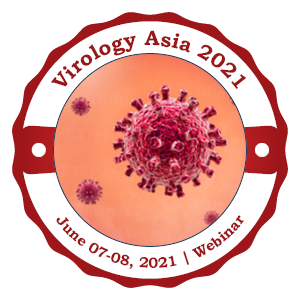Dr. Md Naushad Khan
Department of Biotechnology, School of Chemical and Life Sciences Jamia Hamdard, New Delhi, INDIA
Title: CHIKUNGUNYA VIRUS: MOLECULAR DIAGNOSIS AND PERSPECTIVE TREATMENT
Biography
Biography: Dr. Md Naushad Khan
Abstract
The Chikungunya disease is transmitted by mosquitoes and causes a massive epidemic in the Indian Ocean and other geographical regions. It causes the first epidemic outbreak in Europe, basically Emilia-Romagna in the north-east of Italy between July and September in the year 2007. The number of cases definitely raised these Islands and a million of peoples in India were affected. Greater than 15 fold increases Chikungunya virus (CHIKV) seropositivity when travelers to epidemic regions have returned to the UK. Acute infection of CHIKV associated with fever, joint pain, and chronic rheumatism. The viral RNA is the first marker detected usually by RT- PCR (reverse transcription-polymerase chain reaction) with a specific 294 base pair primer in the sample within 7-8 days of symptom onset. The CHIKV infection is diagnosed with CHIKV specific IgG and/ or IgM serology. Sequencing studies can determine the mutation and the infecting genotype. There is no specific antiviral; physicians simply recommend rest and plenty of fluids. Over-the-counter medication will help ease joint pain and fever. These include naproxen, ibuprofen, and acetaminophen and for longer-lasting aches, physiotherapy may helpful. Currently, there is no vaccine but in general the CHIKV disease short-lived and rarely fatal. The National Institute of Health (NIH) is currently funding a clinical trial of the chikungunya vaccine including VLPs (virus-like particles) rather than inactivated or weakened viruses. This presentation explores the differential diagnosis and perspective for chikungunya treatment. Further, discuss the efficiency of these treatment regimens and the scope of future direction.

